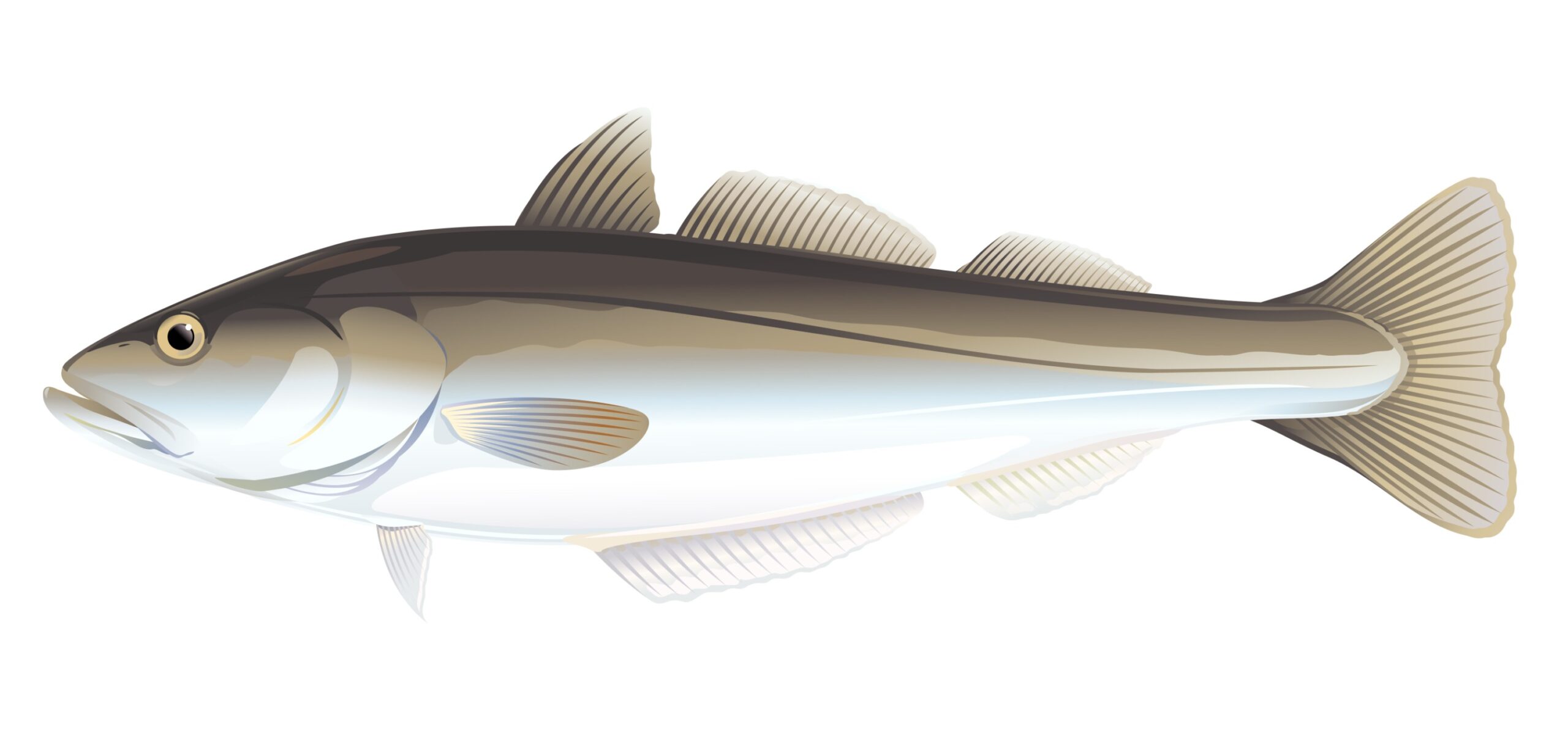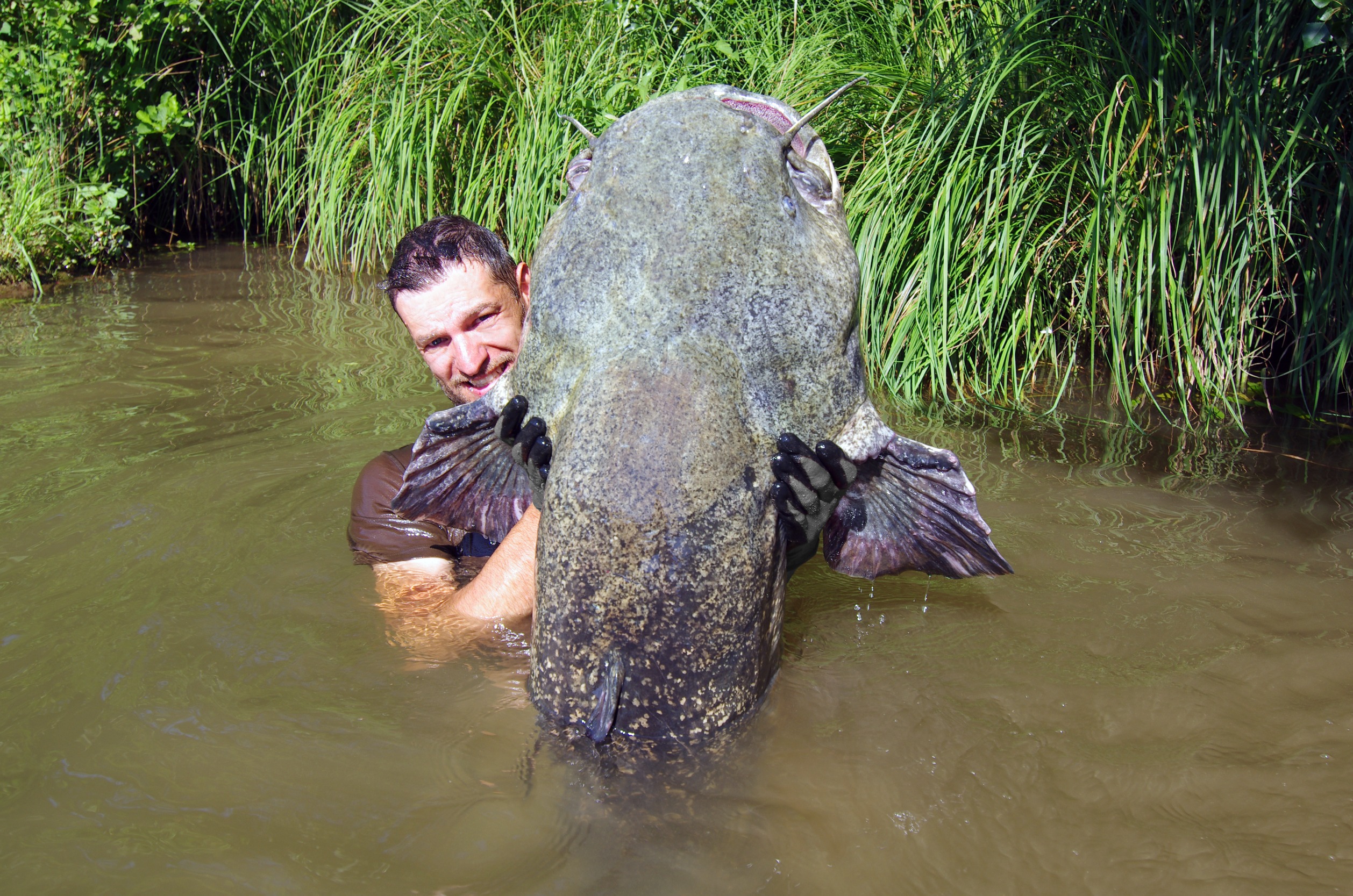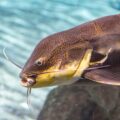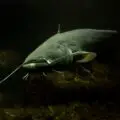Catfish and Pollock differ in several ways. Catfish are members of the Siluridae family, while Pollock are members of the Gadidae family. Catfish prefer freshwater habitats, but Pollock prefers cold sea waters. Catfish have a mild flavor and soft flesh, whereas Pollock has a tougher, flakier texture. These distinctions distinguish them in appearance, environment, and gastronomic quality.

Classification differences between Catfish and Pollock
Both species have elongated bodies. However, catfish have scaleless bodies with a broad, flat head and a long, slender tail. A pollock has fusiform bodies that are streamlined for swift swimming.
The four pairs of whisker-like barbels that protrude from the mouths of catfish, which lack scales, let them sense their environment and find food. On the other hand, Pollock has tiny, overlapping scales covering their entire bodies.
Catfish typically have one dorsal fin, one adipose fin, and one caudal fin. There are both pelvic and pectoral fins. Pollock, however, has two dorsal fins, one of which is closer to the head and the other near the tail.
The skin of catfish is typically smooth and slimy due to mucus, which protects against bacterial infections and facilitates movement. Pollock has a distinctive color pattern, with their backs ranging from greenish blue to grayish-black and ending in a silver-white belly. They may have a mottled appearance as well.
However, they both have unique characteristics; many catfish species have sharp spines on their dorsal and pectoral fins, which serve as a defense mechanism against predators.
Pollock has big, black eyes that allow them great vision, especially in environments with deep water.
Habitat differences between Catfish and Pollock
Catfish are predominantly found in freshwater habitats such as rivers, lakes, and ponds. They are bottom-dwelling fish, often seeking refuge in crevices, under rocks, or within submerged vegetation. Catfish thrive in warmer water temperatures and require well-oxygenated aquatic environments.
Pollock are primarily marine fish that inhabit the cold waters of the North Atlantic and North Pacific oceans. They are midwater swimmers, frequently forming schools near the surface or at intermediate depths. Pollocks are adapted to survive lower temperatures than catfish and prefer colder waters.
Differences in the feeding habits of Catfish and Pollock
Catfish are opportunistic feeders and exhibit a carnivorous diet. They consume a variety of prey, including small fish, insects, crustaceans, and plant matter. Catfish are well-suited for scavenging and foraging on the substrate. Their barbels help detect food items hidden within sediments. Some catfish species employ suction feeding, generating a rapid flow of water to draw prey into their mouths.
Pollock are active predators feeding smaller fish, such as herring, capelin, and sand lance. Pollock exhibits agile swimming behavior, often pursuing their prey in the water column. They rely on their speed and visual acuity to capture fast-moving targets.
Differences in their Culinary Uses
Particularly in areas like the Southern United States, Catfish has a great reputation in the culinary world. Catfish can be prepared using various techniques, including frying, grilling, baking, and incorporating them into stews and soups. Catfish’s mild and delicate flavor makes it a good candidate for various spices, sauces, and cooking techniques.
Pollock is a popular seafood choice consumed worldwide, primarily in regions with coastal access. Pollock’s white, flaky flesh makes it suitable for various cooking methods, such as baking, grilling, frying, or using it as an ingredient in fish soups and chowders. Pollock is often used as a more affordable substitute for cod due to its similar texture and taste.
Family and Taxonomy Differences
Catfish encompass diverse fish species with various morphological and ecological adaptations. They belong to the order Siluriformes, which consists of numerous families and is characterized by their barbels around the mouth.
Pollock belongs to the order Gadiformes, which includes several families of fish. Within this order, Pollock is classified under the family Gadidae, commonly known as the cod family. Other well-known members of this family include cod, haddock, and whiting.
The taxonomic differences between catfish and Pollock highlight their distinct evolutionary lineages and genetic relationships. The order Siluriformes, which includes a variety of fish adaptable to both freshwater and marine environments, includes catfish. On the other hand, Pollock is classified under the order Gadiformes, which primarily consists of marine fish species.
Distribution and Range Differences
Catfish species can be found worldwide in Asia, Africa, Europe, Australia, and the Americas. They have adapted to different freshwater habitats globally. Pollocks are primarily distributed in the North Atlantic and North Pacific oceans. They are more commonly found in colder waters of northern latitudes.
Differences in reproductive strategies
Catfish and Pollock have distinct reproduction techniques tailored to their habitats and ecological requirements. Catfish often fertilize internally. During mating, the male catfish releases sperm, which the female catfish receives through her vaginal entrance. Fertilization occurs within the female’s body. Female catfish lay sticky eggs in nests or carefully deposit them in burrows built by the male. The male may safeguard the eggs by fanning water over them with modified fins, assuring their safety and providing oxygen circulation. This parental care continues until the eggs hatch, when the fry may still receive some care from the male.
On the other hand, Pollock uses external fertilization. Adult pollock congregate in huge groups known as schools throughout the spawning season. Males discharge sperm into the sea, while females release eggs at the same time. Fertilization occurs in open water, with the sperm fertilizing the eggs. Pollock lays a large number of small, buoyant eggs that are left to mature and hatch without parental supervision. The buoyancy of the eggs keeps them afloat in the water column, allowing them to develop in favorable conditions.
Their divergent reproductive techniques reflect the varied habitats in which catfish and Pollock thrive. Catfish live mostly in freshwater habitats such as rivers, lakes, and ponds, where the protection and oxygenation given by nesting or burrowing behaviors benefit their offspring’s survival. On the other hand, Pollock is largely a marine fish living in the chilly waters of the North Atlantic. During spawning, the vast open water and the presence of big schools aid in the spread and fertilization of their eggs. Overall, the contrasts in reproductive techniques between catfish and Pollock illustrate both species’ amazing adaptability to their distinct ecological niches, guaranteeing their populations’ survival in their respective habitats.
Size
The size of catfish varies greatly depending on the species. Some smaller species, like the Corydoras catfish, may only reach a few inches long. On the other hand, the Mekong giant catfish (Pangasianodon gigas) may grow to great sizes, reaching lengths of over 9 feet (2.7 meters) and weighing several hundred pounds. Food availability, habitat, and the environment can all impact catfish growth.
Compared to catfish, Pollock often has a more consistent size range. The average size varies across various populations and geographical areas, usually falling between 1 and 3 feet (30 and 90 cm) in length. Female Pollock tend to be larger than males, with some individuals reaching lengths of up to 4 feet (120 centimeters). Pollock’s size may be affected by things including heredity, habitat, and food availability.

Growth
The growth rate of catfish species can vary significantly depending on the species, environmental conditions, and food availability. Generally, catfish are known for their relatively slow growth compared to some other fish species. Pollock is known for their relatively fast growth rate compared to catfish. They have a rapid growth phase during their early years, with growth rates influenced by factors such as food availability, temperature, and overall environmental conditions. Depending on the population, Pollock can reach maturity at around 2 to 3 years of age.
Lifespan
Catfish species generally have longer life spans compared to Pollock. Catfish can live for several decades, depending on the species and environmental conditions. Some large species, like the Mekong giant catfish, can live up to 50 years or more. Pollock has shorter life spans compared to catfish. While it can vary depending on environmental conditions and predation, pollocks typically live in the wild for around 15 to 20 years.
Differences in Ecological Rule
Catfish play an essential ecological role as bottom-dwelling scavengers and predators. They contribute to nutrient cycling by consuming organic debris and prey on smaller organisms, helping to control population levels. Pollocks are an important part of the marine food chain. They serve as prey for larger predatory species, such as marine mammals and birds, and also support commercial fishing industries.
Differences In Economic Importance
Catfish farming, or aquaculture, is a significant industry in many countries, particularly in the United States, Vietnam, and Nigeria. It is one of the most commonly farmed fish globally, providing a valuable source of protein and employment opportunities.
Pollock is commercially important, especially in the United States, where it is a major fishery resource. It is widely harvested for its flesh, which is used in various seafood products such as fish sticks, fish fillets, and surimi.
Differences In Fishing Techniques
Catfish are commonly caught by angling with baits like worms or cut bait. Catfish can also be captured in commercial fishing operations using nets or traps.
Trawling, a technique that includes dragging nets across the water to catch fish in great numbers, is mainly used to catch Pollock. They are also targeted by commercial longline fishing and jigging methods.
How do their demand and market value differ?
The market value of catfish can vary depending on factors such as quality, size, and market demand in specific regions. In areas with highly prized catfish, it can command a relatively higher price due to its popularity and regional significance. Additionally, value-added products like breaded catfish fillets or smoked catfish may have different market values.
Pollock is generally considered a more economical fish option than other species. Its affordability, versatility, and availability contribute to its market demand. The market value of Pollock can vary depending on factors such as the form (whole fish, fillets, or processed products) and the region in which it is sold.
Catfish has a more localized market and is often consumed domestically within the regions where it is popular. While there may be some international trade in catfish products, it is less extensive and globally recognized than other fish species.
Pollock has a significant international trade presence. Its global demand and widespread availability have led to a substantial export market. Countries like the United States, Russia, China, and Japan are major players in the international pollock trade.
Different amounts of minerals and Vitamins
Omega-3 Fatty Acids
-
- Catfish: Compared to Pollock, catfish typically have lower quantities of omega-3 fatty acids.
-
- Pollock: Omega-3 fatty acids, which are good for heart health and general well-being, are known to be substantially more abundant in Pollock.
Protein
-
- Catfish: Catfish is a good source of high-quality protein and offers the essential amino acids required for tissue development and repair.
-
- Pollock: A great source of protein due to its high protein content is Pollock.
Vitamin B12
-
- Catfish: Catfish have a considerable quantity of vitamin B12, which is necessary to create red blood cells, DNA, and nerve tissue.
-
- Pollock: Pollock’s relatively high vitamin B12 content contributes to its function in neurological health and energy metabolism.
Vitamin D
Catfish includes a small amount of vitamin D, which promotes bone health by regulating the body’s calcium and phosphorus levels.
-
- Pollock: Compared to catfish, Pollock often contains greater vitamin D levels.
5. Minerals:
-
- Catfish: Catfish is a good source of selenium, phosphorus, and potassium, which are important for many biological processes.
-
- Pollock: A well-rounded nutritional profile is provided by Pollock, containing minerals including selenium, phosphorus, and potassium.
Understanding these distinctions, we can appreciate the diversity of aquatic life and recognize the unique roles these fish species play in their respective ecosystems and human societies.











